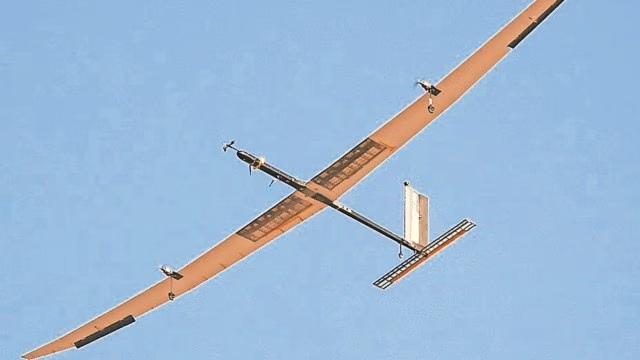Important Facts For Prelims
High Altitude Pseudo-Satellite (HAPS)
- 13 Feb 2024
- 3 min read
Why in News?
The Council of Scientific and Industrial Research (CSIR) - National Aerospace Laboratories (NAL) recently conducted successful tests on a High Altitude Pseudo-Satellite (HAPS), marking a significant milestone in unmanned aerial vehicle (UAV) technology.
What is High Altitude Pseudo-Satellite (HAPS)?
- About:
- HAPS is a solar-powered UAV. It can generate solar energy and remain in the air for months or years.
- HAPS operates in the stratosphere (which extends from 6-50 km above the earth’s surface), flying at altitudes of 18-20 km, nearly double the heights of commercial aeroplanes. This altitude allows them to provide surveillance capabilities akin to satellites.
- HAPS is designed for persistent surveillance, communications, and specialist science missions.
- HAPS is a still-developing technology, and the successful test flight puts India among a very small group of countries currently experimenting with this technology.
- HAPS is a solar-powered UAV. It can generate solar energy and remain in the air for months or years.
- Need:
- The need for development of HAPS arose from the desire to have continuous surveillance of border areas to detect changes or movements, particularly in the wake of the Doklam standoff in 2017.
- Previous limitations with battery-powered UAVs and satellites led to the development of solar-powered UAVs.
- The cost of operating HAPS is significantly lower than traditional satellites as it doesn't require rocket launches.
- Versatility and Applications:
- HAPS can be deployed in disaster situations and provide mobile communication networks (5G waves) in remote areas, if the normal networks get damaged due to any calamity.
- They can double up as “towers in the sky” and have more flexibility than satellites, in being able to map a piece of land from above.
CSIR- National Aerospace Laboratories
- NAL, a constituent of the CSIR, established in 1959 in Bengaluru, is the only government aerospace R&D laboratory in the country’s civilian sector.
- CSIR-NAL is a high-technology-oriented institution focusing on advanced disciplines in aerospace.
- CSIR-NAL has provided significant value-added inputs to all the Indian national aerospace programmes.
- CSIR-NAL’s mandate is to develop aerospace technologies with strong science content, design and build small, medium sized civil aircraft, and support all national aerospace programmes.
UPSC Civil Services Examination, Previous Years Questions (PYQs)
Prelims:
Q1. What is “Terminal High Altitude Area Defense (THAAD)”, sometimes seen in the news? (2018)
(a) An Israeli radar system
(b) India’s indigenous anti-missile programme
(c) An American anti-missile system
(d) A defence collaboration between Japan and South Korea
Ans: (c)








